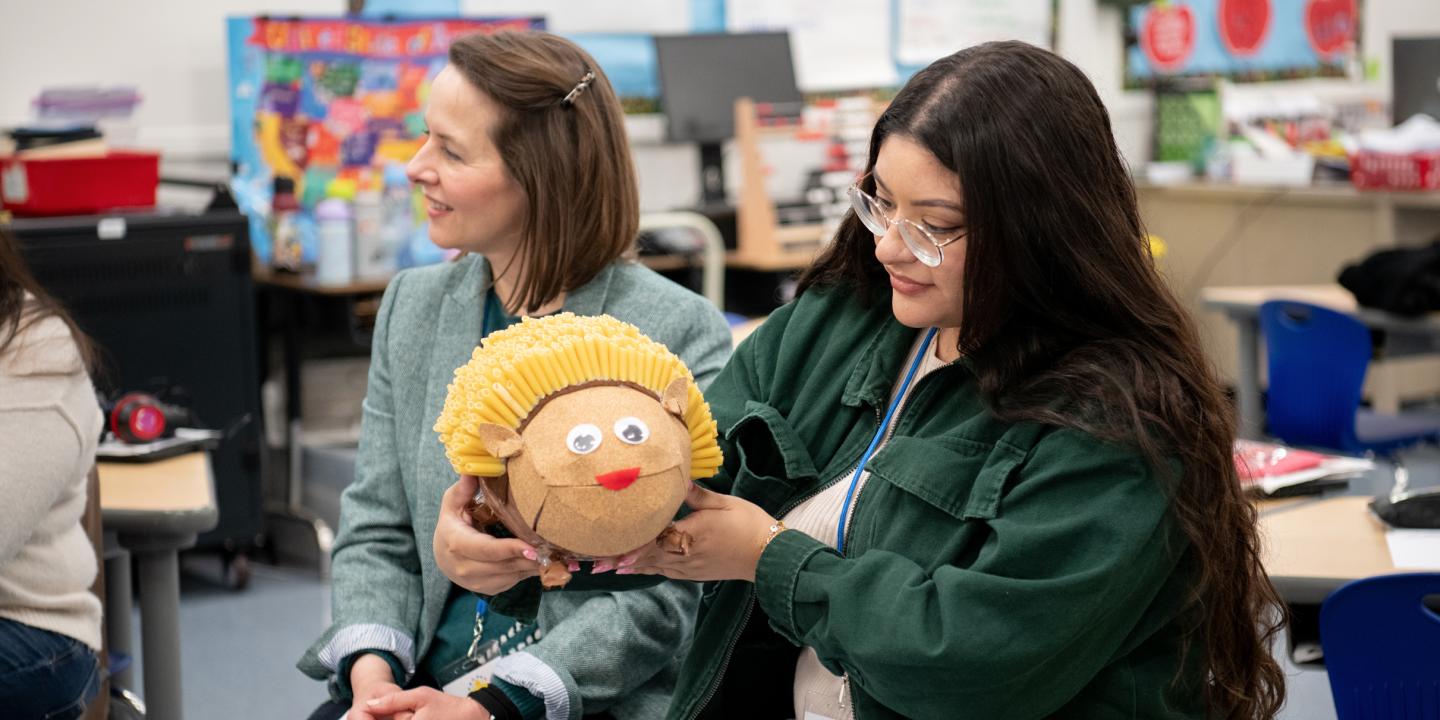
Educators at the Center
The Skirball’s Teacher Advisory Council (STAC) brings together dedicated TK through Grade 12 educators from local schools to help shape the future of our school programs. Now in its fourth year, the STAC continues to play a vital role in guiding our educational work.
STAC members meet regularly to offer thoughtful input on curriculum development, scheduling, and outreach strategies. Just as importantly, they share firsthand insight into the realities of today’s classrooms—helping us understand students’ experiences and ensuring our programs remain meaningful, relevant, and aligned with evolving needs. Their involvement goes far beyond consultation. These educators step into leadership roles—co-facilitating community events, piloting new models for professional development, and providing real-time feedback that helps us continually refine and improve our offerings.
Through the STAC, the Skirball supports teachers as collaborators, inviting them into a meaningful partnership that strengthens classroom instruction, nurtures professional growth, and deepens the connection between educators and museum learning.
With your continued support, we are expanding this work and creating even more opportunities for teachers to lead, grow, and inspire with the Skirball.
Suva Elementary Story
In early March 2025, veteran educator and STAC member Ms. Cervantes introduced her class at Suva Elementary School in Montebello Unified School District to the Skirball’s award-winning Art of Imagination: Noah’s Ark at the Skirball curriculum, using its interactive videos and activities to reinforce visual and performing arts, literacy, science, and social-emotional learning standards. Inspired by timeless flood stories, the Art of Imagination curriculum focuses on the ways that each of us, including the youngest members of our community, can make a difference. In her classroom, students engaged in close-looking exercises and empathy-building discussions, exploring themes of community, environmental stewardship, and inclusivity well before setting foot on the Skirball campus.
In mid-March, the class traveled to the Skirball Cultural Center for their Noah’s Ark School Tour. Among whimsical animals made from repurposed objects, students connected classroom learning to real-world experience. They touched, played, and experimented, encouraged by the museum educators guiding their exploration. The visit concluded in the Rainbow Gallery, where students listened to a story about perseverance and learned that rainbows can symbolize new beginnings, hope, and peace.
Two weeks later, the Skirball Education team visited Suva Elementary School to support Ms. Cervantes, participate in the student presentations, and witness the impact of the program. Each child had crafted their own “Ark animal” from found materials such as bottle caps, fabric scraps, and cardboard tubes, and shared a presentation about its story and characteristics. The children rehearsed carefully, knowing they would be presenting to guests. Their confidence, creativity, and community spirit filled the classroom.
As part of their reflection on the Noah’s Ark at the Skirball experience, the class painted rainbows and wrote about the actions they would take to build a better world. For a school miles from the Skirball, this three-step journey of classroom learning, in-person museum exploration, and post-visit reflection, provided meaningful, transformative access to arts education and social-emotional learning. Your support ensures that more students like those at Suva Elementary can participate in this powerful cycle of imagination, connection, and growth.
Q&A with Martha Cervantes of Suva Elementary
Preparation & Pre-Visit Learning
Q: How did the Skirball’s Art of Imagination virtual toolkit shape your students’ understanding and excitement before you even arrived on campus?
I used all the videos on the Skirball’s Art of Imagination website before our visit. Each video had a different focus. One goal was to help students see how animals were created from recycled materials and to understand that art can be made with everyday items they have at home. Another was to get them excited about the field trip.
The Maasai and Lenape flood stories supported our academic standards for retelling and analyzing stories by their elements. These videos helped students explore the theme of crisis and community resilience, ideas that connected directly to the story they heard at Noah’s Ark. The classroom lessons gave students a foundation to make stronger, more meaningful connections during the field trip.
In-Person Experience
Q: During the Noah’s Ark tour, what moments stood out most for you—both in terms of student engagement and curriculum connections?
What stood out most was the students’ excitement and full engagement. They were smiling, their eyes beaming. They were immersed in the experience, happy to play with the animals, eager to explore. Some even remembered the animals from the videos we watched in class.
The visit was thoughtfully organized. Our group of about forty students was split into four smaller groups, each rotating through different experiences. One highlight was experimenting with musical instruments many students had never seen before.
The Skirball educators were kind and respectful, creating a welcoming environment. Seeing the animals made from found objects sparked students’ creativity, directly inspiring their own art. In the Rainbow Gallery, they heard a story about perseverance, reinforcing both English Language Arts standards and our social-emotional learning theme of believing in yourself.
Post-Visit Reflection & Application
Q: When the Skirball Education Team returned to your classroom, how did the follow-up activities deepen your students’ learning and sense of community?
Students were thrilled to see the Skirball educators again. They knew they would be presenting their Ark animals to educators Carmen and Lisa, so they put in extra effort rehearsing and preparing. The presence of the educators made them feel important, like their work mattered.
Each child shared the story behind their animal, and the educators offered thoughtful, affirming feedback. The visit strengthened the students’ connection to the Skirball. It validated their voices, their creativity, and their learning.